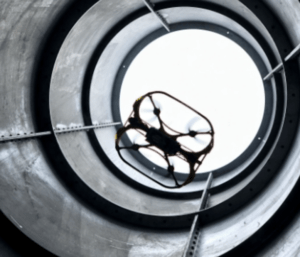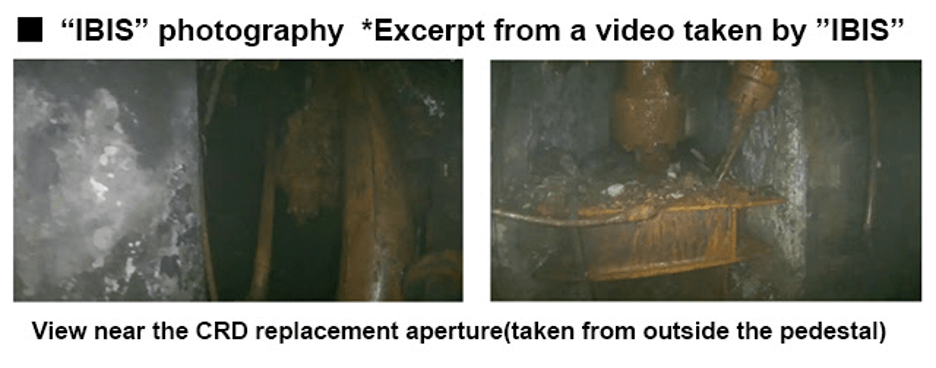 This article published in collaboration with JUIDA, the Japan UAS Industrial Development Association.
This article published in collaboration with JUIDA, the Japan UAS Industrial Development Association.
Innovative Drone Technology Enables Inspection of Highly Radioactive and Space-Limited Areas for the First Time Since 2011: Fukushima Nuclear Site Drone Inspection
by DRONELIFE Staff Writer Ian J. McNabb

Liberaware IBIS drone
Chiba-based industrial drone developer Liberaware recently announced that their flagship Ibis drone, designed for industrial survey and inspection in severely space-limited environments, was used to survey the Fukushima nuclear disaster site earlier this year. These previously unexplored areas of the disaster site include the top portion of the Primary Containment Vessel, where much of the most radioactive nuclear fuel waste is stored. While previous operations have been focused on the lower portion, this was the first effort since the 2011 earthquake to gain access to the upper segment of the PCV, where radioactivity makes human inspection impossible and the narrow spaces are too confined for most traditional surveying UAVs.
Because of the complex topography of the reactor site, including an uneven floor and multiple levels, the Ibis was chosen over ground-based inspection equivalents. Measuring just 20 cm square and with an ultra-high sensitivity camera supported by a built-in LED lighting system, the Ibis accessed the narrow seal area and confirmed the existence of some icicle or stalactite-like deposits near the main control mechanism, as well as the generally good condition of the remaining concrete.


Liberaware CEO, Hong Gyu-Min, said, “My first encounter with drones was 11 years ago, when I participated as a researcher in a project commissioned by the Agency for Natural Resources and Energy to Chiba University. In that project, we took on the mission of developing a drone that could fly autonomously inside the reactor building after the accident at the Fukushima Daiichi Nuclear Power Plant. We faced many challenges while battling the limits of technology, but the project was completed with a demonstration experiment. Now, after 11 years, I have the opportunity to take on that mission again. This time, as a member of Liberaware, I feel truly happy to have been able to realize a dream that I had been unable to achieve in the past and contribute to society. I am also truly honored to have had this opportunity. At Liberaware, we aim to contribute to society by developing products that are more high-performance and easier to use.”
More information on the project, as well as Liberaware, is available here (in Japanese)
Read more:
 Unmanned Aerial Vehicle The latest drone news
Unmanned Aerial Vehicle The latest drone news
